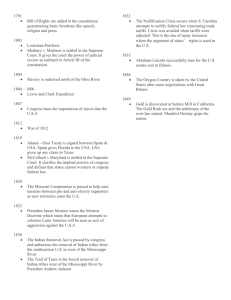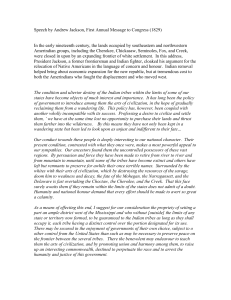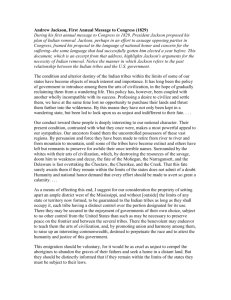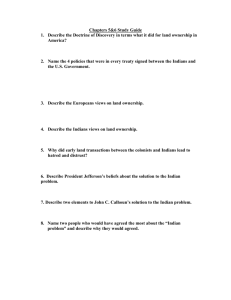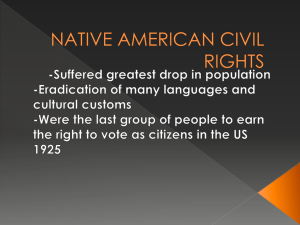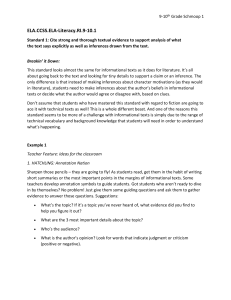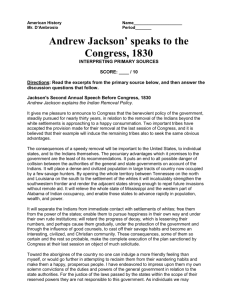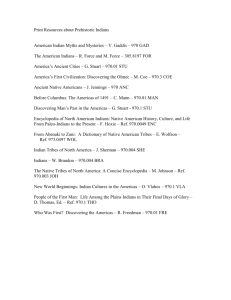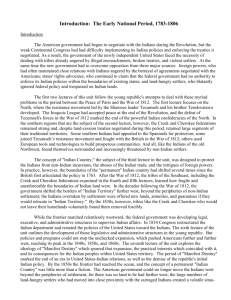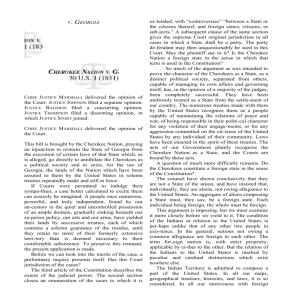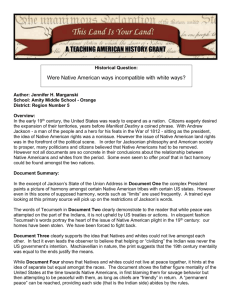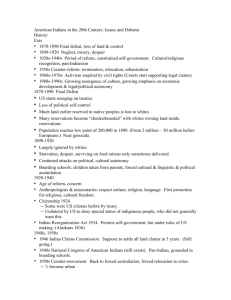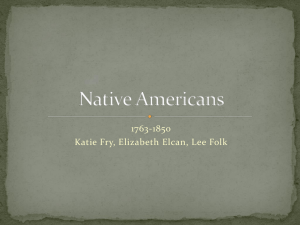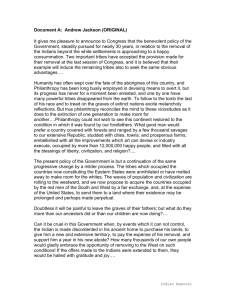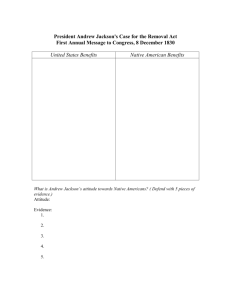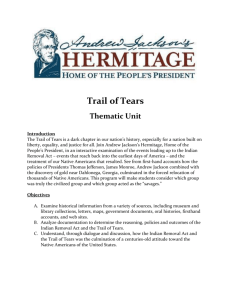Reading Quiz 3 - Jessamine County Schools
advertisement
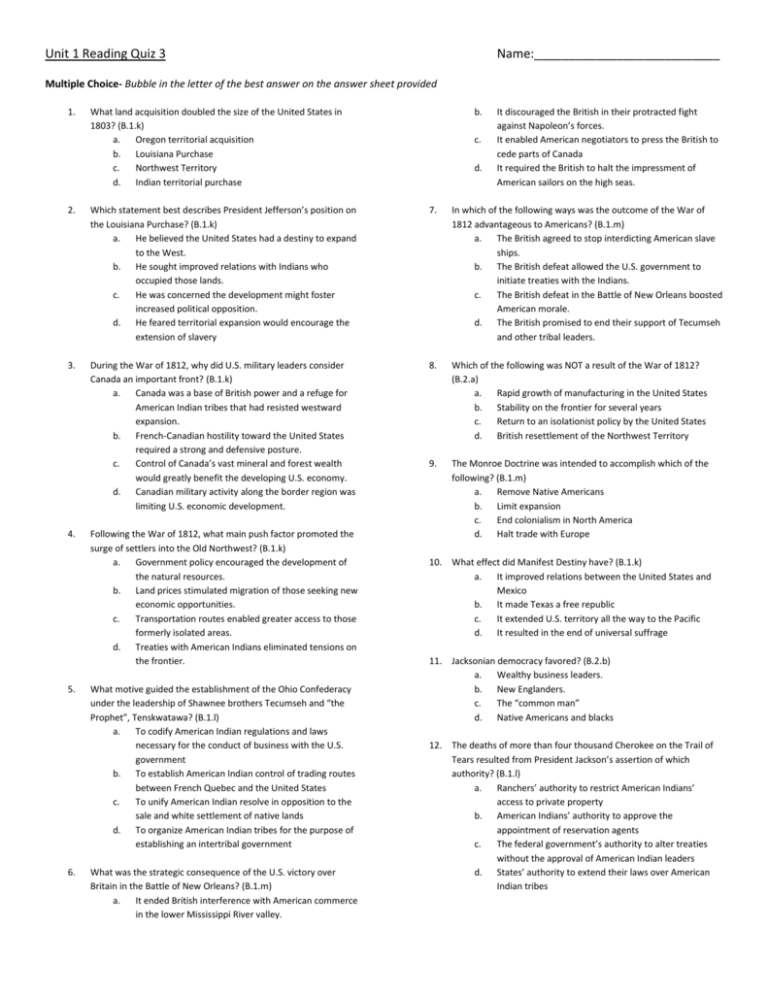
Unit 1 Reading Quiz 3 Name:___________________________ Multiple Choice- Bubble in the letter of the best answer on the answer sheet provided 1. What land acquisition doubled the size of the United States in 1803? (B.1.k) a. Oregon territorial acquisition b. Louisiana Purchase c. Northwest Territory d. Indian territorial purchase b. c. d. It discouraged the British in their protracted fight against Napoleon’s forces. It enabled American negotiators to press the British to cede parts of Canada It required the British to halt the impressment of American sailors on the high seas. 2. Which statement best describes President Jefferson’s position on the Louisiana Purchase? (B.1.k) a. He believed the United States had a destiny to expand to the West. b. He sought improved relations with Indians who occupied those lands. c. He was concerned the development might foster increased political opposition. d. He feared territorial expansion would encourage the extension of slavery 7. In which of the following ways was the outcome of the War of 1812 advantageous to Americans? (B.1.m) a. The British agreed to stop interdicting American slave ships. b. The British defeat allowed the U.S. government to initiate treaties with the Indians. c. The British defeat in the Battle of New Orleans boosted American morale. d. The British promised to end their support of Tecumseh and other tribal leaders. 3. During the War of 1812, why did U.S. military leaders consider Canada an important front? (B.1.k) a. Canada was a base of British power and a refuge for American Indian tribes that had resisted westward expansion. b. French-Canadian hostility toward the United States required a strong and defensive posture. c. Control of Canada’s vast mineral and forest wealth would greatly benefit the developing U.S. economy. d. Canadian military activity along the border region was limiting U.S. economic development. 8. Which of the following was NOT a result of the War of 1812? (B.2.a) a. Rapid growth of manufacturing in the United States b. Stability on the frontier for several years c. Return to an isolationist policy by the United States d. British resettlement of the Northwest Territory 9. The Monroe Doctrine was intended to accomplish which of the following? (B.1.m) a. Remove Native Americans b. Limit expansion c. End colonialism in North America d. Halt trade with Europe 4. 5. 6. Following the War of 1812, what main push factor promoted the surge of settlers into the Old Northwest? (B.1.k) a. Government policy encouraged the development of the natural resources. b. Land prices stimulated migration of those seeking new economic opportunities. c. Transportation routes enabled greater access to those formerly isolated areas. d. Treaties with American Indians eliminated tensions on the frontier. What motive guided the establishment of the Ohio Confederacy under the leadership of Shawnee brothers Tecumseh and “the Prophet”, Tenskwatawa? (B.1.l) a. To codify American Indian regulations and laws necessary for the conduct of business with the U.S. government b. To establish American Indian control of trading routes between French Quebec and the United States c. To unify American Indian resolve in opposition to the sale and white settlement of native lands d. To organize American Indian tribes for the purpose of establishing an intertribal government What was the strategic consequence of the U.S. victory over Britain in the Battle of New Orleans? (B.1.m) a. It ended British interference with American commerce in the lower Mississippi River valley. 10. What effect did Manifest Destiny have? (B.1.k) a. It improved relations between the United States and Mexico b. It made Texas a free republic c. It extended U.S. territory all the way to the Pacific d. It resulted in the end of universal suffrage 11. Jacksonian democracy favored? (B.2.b) a. Wealthy business leaders. b. New Englanders. c. The “common man” d. Native Americans and blacks 12. The deaths of more than four thousand Cherokee on the Trail of Tears resulted from President Jackson’s assertion of which authority? (B.1.l) a. Ranchers’ authority to restrict American Indians’ access to private property b. American Indians’ authority to approve the appointment of reservation agents c. The federal government’s authority to alter treaties without the approval of American Indian leaders d. States’ authority to extend their laws over American Indian tribes 13. What does the shaded area of this map represent? (B.1.l) 18. Which of the following is NOT associated with the American System? (B.2.a) a. It was developed by Andrew Jackson. b. It promoted funding for a strong national bank to provide credit. c. It would allow for protective tariffs. d. The federal government would fund canal and road construction. 19. The doctrine of nullification stated that (B.2.b) a. legal immigrants may be deported when they fall into a state of destitution. b. Congress may override an executive order with a two-thirds majority vote. c. municipal and county governments may rescind licenses granted by the state. d. states can declare federal laws, such as tariffs, null and void if they believe the laws are unconstitutional. a. b. c. d. The final destination of the Five Civilized Tribes The first state to enfranchise women The site of the completion of the transcontinental railroad The last slave state admitted into the Union 14. Which act of Congress, passed in 1830, authorized the removal of the Five Civilized Tribes to an area west of the Mississippi River? (B.1.l) a. Worcester v. Georgia b. The Tariff of 1828 c. McCulloch v. Maryland d. The Indian Removal Act 15. The Supreme Court ruled Indians were sovereign over their lands in which 1832 court case? (B.1.l) a. Worcester v. Georgia b. Marbury v. Madison c. Jackson v. Marshall d. Cherokee v. Jackson 16. Which statement accurately characterizes President Jackson’s actions following the decision in Worcester v. Georgia? (B.1.l) a. He requested Congress pass a constitutional amendment authorizing the removal of Native American tribes b. He ignored the decision, famously saying, “John Marshall has made his decision; now let him enforce it.” c. He accepted the decision and gave up on forced removal of Native Americans d. He changed tactics against Native Americans, advocating for the assimilation of the Five Civilized Tribes into American society. 17. Which two works were most similar in their political intent? (B.2.b) a. Thoreau’s “Civil Disobedience” and Emerson’s “Self Reliance.” b. The Federalist and Tocqueville’s Democracy in America. c. The Emancipation Proclamation and the Fugitive Slave Law. d. The Kentucky Resolution and the South Carolina Ordinance of Nullification 20. Which of the following actions was mainly responsible for the Panic of 1837? (B.2.b) a. The debt the federal government took on to create the American System b. The printing of large amounts of paper money after Andrew Jackson instructed money from the National Bank to be put into the state “pet” banks led to the requirement that all land be purchased with coin or “hard” currency. c. The Tariff of Abominations and Nullification Crisis in South Carolina. d. The Indian Removal Act and the Trail of Tears that followed removing large numbers of Native Americans from the Southeast.
